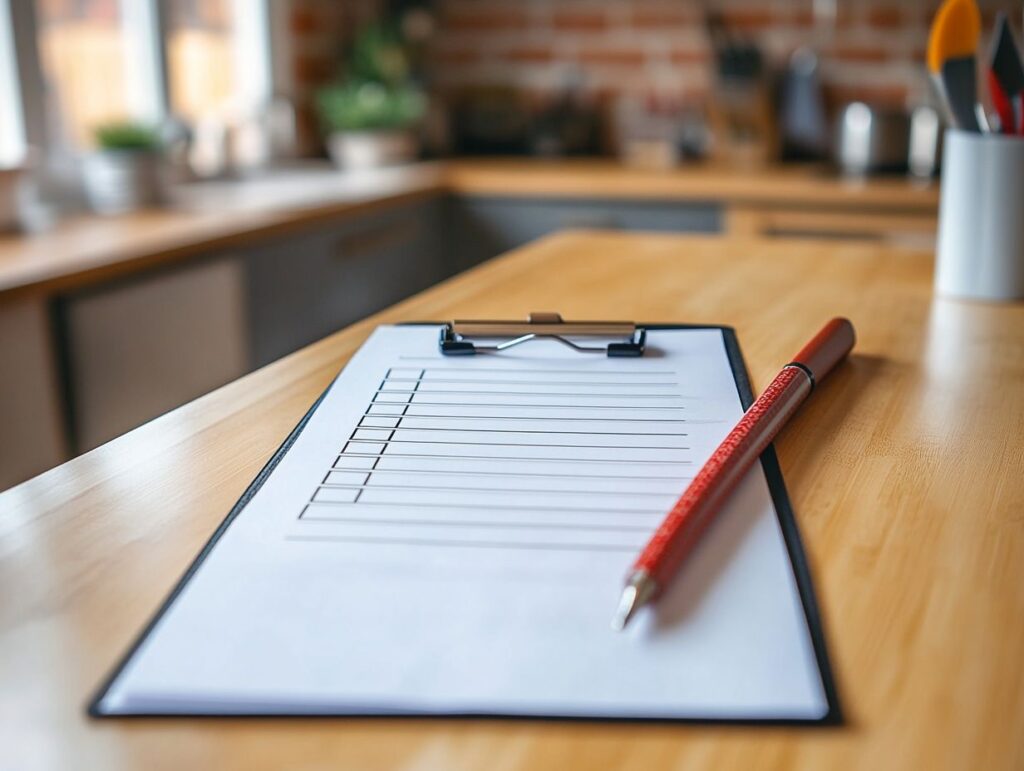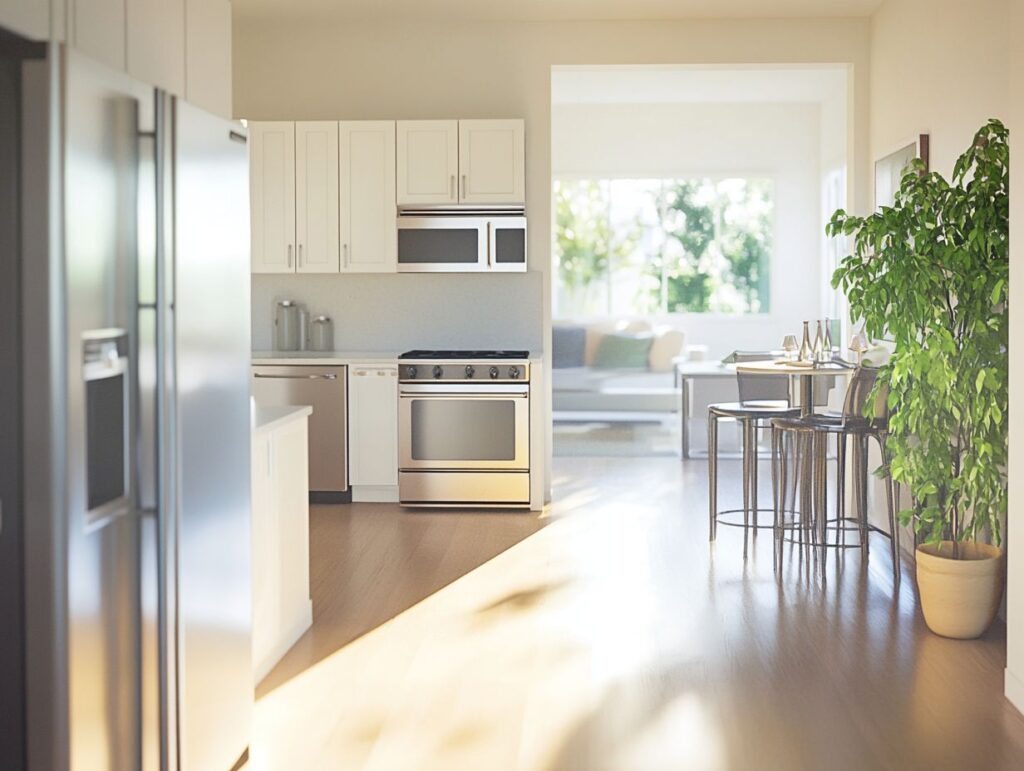You’ve shaken hands with your former tenants and said your goodbyes. No hard feelings – they were good people, and you had an excellent relationship, but life goes on. You don’t have time to spare – if you have already listed your attractive property for lease, you might have the first calls in days. So, let’s see how to expedite the preparation and present your property in the best light for its future occupants!

Overview of Landlord-Tenant Relationship
The landlord-tenant relationship is extremely important when renting. You must understand your rights and responsibilities to keep things running smoothly and maximise your rental experience.
Clear communication and adhering to your tenancy agreement are essential for creating a positive atmosphere. A successful relationship depends on mutual respect, understanding tenants’ expectations, and ensuring landlords fulfil their duties.
This way, you enhance tenant satisfaction and even the property value.
Preparing the Property for New Tenants
Preparing your property for new tenants involves a few key steps to create a clean and welcoming environment. This preparation builds trust with your tenants and includes a thorough move-in inspection to document the property’s condition and provide them with a checklist for cleaning tasks.
Managing expectations through clear property guidelines is crucial for maintaining hygiene standards and enhancing tenant satisfaction.
Deep Cleaning and Maintenance Tasks
Deep cleaning is crucial to keeping your rental property in top condition. It ensures that every nook and cranny is spotless and ready for new tenants. A thorough cleaning checklist helps you cover everything, from the inside to the outside, ensuring you use your cleaning supplies effectively. This kind of preparation sets the standard high for cleanliness, boosting tenant satisfaction and building trust.
Focusing on carpets, kitchen appliances, and bathrooms makes the place look great and contributes to a healthier living environment. And don’t forget about your outdoor spaces! Keeping patios and gardens tidy is crucial in creating an attractive, welcoming atmosphere. You might want to consider hiring professionals for deep cleaning tasks; they can tackle those hard-to-reach spots you might overlook.
This investment aligns perfectly with tenants’ expectations of their living spaces—pristine conditions that keep them happy and help you maintain lower turnover rates.
Ensuring Safety and Functionality
Ensuring your rental property is safe and functional is vital to keeping your tenants happy and fulfilling your landlord’s responsibilities.
Regular safety inspections are crucial for spotting hazards such as faulty plumbing, electrical issues, and other risks that could affect your tenants’ living environment. Furthermore, maintaining smoke alarms and carbon monoxide detectors in excellent condition helps create a safer atmosphere for everyone.
Checking for Potential Hazards and Repairs
Conducting checks for potential hazards and necessary repairs is vital to keeping your rental property safe and minimising tenant turnover. Regular maintenance inspections help you address issues quickly and create a property condition report that details any needed repairs or safety compliance measures. Adhering to safety standards can build tenant trust and promote a positive living experience.
This thorough documentation isn’t just for your benefit; it’s also a valuable reference for your tenants. It outlines the state of the property and any actions taken. When you systematically identify hazards—such as electrical problems, plumbing leaks, or structural weaknesses—you take a proactive approach that reduces risks and demonstrates your commitment to tenant safety.
By documenting repairs and improvements clearly, you can foster a transparent relationship with your tenants, making them feel secure. Keeping up with maintenance not only helps you retain tenants but also aligns with local regulations, ensuring compliance and creating a welcoming and safe residential environment.

Providing Necessary Amenities
Providing the right amenities is crucial for making your rental property more appealing and keeping your tenants happy. Think of amenities as the cherry on top—from practical features like secure premises and maintenance-free communal areas to aesthetic upgrades like fresh paint and tidied-up landscaping.
When you meet environmental and rental standards, you boost your property’s value and attract prospective tenants who are looking for a welcoming place to call home.
Furnishing and Supplying the Property
Furnishing and supplying your rental property can boost its appeal and functionality for new tenants. Selecting the right furniture and amenities can improve the aesthetics and comfort of the place, making it feel inviting.
During new tenant orientation, sharing details about the furnishings you have included helps set clear expectations and promotes satisfaction right from the start.
The right furnishings make the space look good and make tenants feel valued and comfortable in their new home. By considering essentials like quality bedding, functional kitchen items, and stylish decor, you create a memorable move-in experience.
Attention to these details can lead to long-lasting relationships and higher retention rates. People are more likely to settle into a modern and homely space. Enhancing your rental property with thoughtfully selected amenities can turn a simple house into a cherished home, fostering a sense of community and belonging.
Setting Expectations for Tenants
Setting clear expectations for tenants is crucial for building a smooth landlord-tenant relationship and ensuring everyone is on the same page with rental policies. By keeping the lines of communication open about your responsibilities as a landlord, property guidelines, and tenant rights, you and your tenants will better understand what is expected during the tenancy period.
This proactive approach helps minimise disputes and enhance overall tenant satisfaction.
Communicating Rules and Guidelines
Effective communication of rules and guidelines is crucial for building a transparent relationship between you and your landlord. When rental policies, tenant rights, and landlord duties are clearly outlined, it creates a predictable environment where you can feel secure and respected. Starting with this information during a new tenant induction can set a positive tone.
But it doesn’t stop there! Using clear signage around the property, distributing written materials, and maintaining an easily accessible online portal for policy updates can significantly impact your understanding. These methods keep you informed and ready to navigate your responsibilities, helping to foster a culture of trust. When you see the rules clearly explained and readily available, you’ll be more likely to adhere to them and feel given the power to raise any concerns.
Taking this proactive approach boosts compliance and helps create a supportive community where open dialogue is encouraged, creating a harmonious living environment for everyone involved.
Handling Move-In and Move-Out Processes
Effectively handling move-in and move-out processes is critical to keeping tenant turnover low and ensuring your property is in top-notch condition for new tenants.
When you carry out a thorough move-in inspection, you can document the property’s condition and help tenants understand what is expected of them. Likewise, having a structured move-out cleaning process means the place will be ready and welcoming for the next occupant.
Documenting Property Conditions and Deposits
Documenting the property’s condition and managing deposits are key steps in your move-in and move-out processes. This ensures clarity and protects the rights of both you and your landlord. A detailed property condition report can be a lifesaver during disputes, and aligning your deposit agreements with these documents builds trust and compliance. By keeping thorough documentation, you boost transparency and help reduce potential conflicts.
Creating a comprehensive property condition report means taking clear photographs, noting any existing damage, and documenting any quirks that might impact your tenancy. This careful approach not only sets clear expectations but also acts as a safeguard for you as a tenant, reinforcing your rights regarding the return of your deposit.
This documentation can be invaluable for mediating disputes regarding wear and tear versus intentional damage.
As a result, you and your landlord can feel secure, knowing there’s a solid record supporting fair assessments during those transition periods, ultimately fostering a harmonious rental relationship.